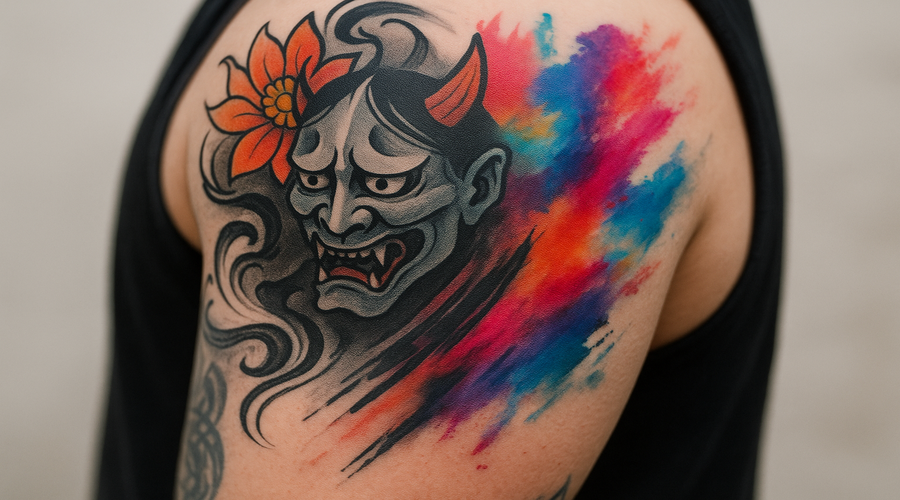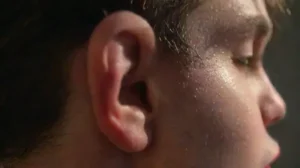Tattoo art has long been regarded as a form of personal expression and cultural identity. Over the years, it has evolved from simple symbols and markings to complex, vibrant designs that tell stories and convey emotions. As society’s perceptions have shifted, so too has the acceptance of tattoos, transforming from taboo to mainstream art forms.
In recent times, the boundaries that once defined tattoo art have become increasingly fluid. Artists now experiment with a wide variety of styles, techniques, and mediums, challenging conventional notions of what a tattoo can be. This convergence of influences has opened new horizons for creativity and self-representation.
The Fusion of Styles
Modern tattoo artists frequently blend different styles to create unique and personalized pieces. For example, a traditional Japanese motif might be combined with abstract watercolor techniques, resulting in a striking visual contrast. This fusion allows for a broader range of expression and storytelling within a single artwork.
This integration of styles reflects a deeper cultural dialogue, where artists draw inspiration from global art movements. The boundaries between genres become less defined, encouraging innovation and experimentation. Clients benefit from this approach, receiving tattoos that are truly one-of-a-kind.
Moreover, hybrid styles encourage a dialogue between different cultural and historical contexts. Tattoos can now celebrate diverse heritages and personal experiences without being confined by traditional categorizations. This versatility enhances the richness of both the artwork and its meaning.
Technology and Innovation
Technological advancements have played a pivotal role in reshaping tattoo art. High-tech tools like digital design software enable artists to perfect their sketches before inking them onto skin. This precision opens up possibilities for intricate and detailed work that was previously difficult to achieve.
Furthermore, innovations in tattooing equipment and pigments have expanded the palette of colors and textures available. Artists now experiment with metallic inks, glow-in-the-dark elements, and 3D effects that add depth and dimension to tattoos. These developments push the boundaries of what is visually possible.
Digital platforms also facilitate a global exchange of ideas and inspiration among artists and clients alike. Social media enables sharing of experimental techniques and collaborative projects, fostering a creative community that constantly defies traditional limits. This interconnectedness accelerates innovation in the art form.
Societal Perceptions
Attitudes toward tattoos have shifted considerably, influenced by cultural shifts and increased visibility of diverse expressions. What was once considered rebellious or taboo is now embraced in many professional and social settings. This changing perception allows for greater freedom in artistic expression.
Despite this progress, some stigma still remains in certain communities or industries. Artists often navigate complex social dynamics when showcasing boundary-pushing designs. Nonetheless, the overall trend points toward acceptance and celebration of diversity in tattoo art.
The evolving societal views also encourage clients to seek designs that reflect their true selves, rather than conforming to traditional expectations. As a result, tattoos are becoming more than mere decoration—they are powerful statements of identity and authenticity.
Female Artists and Diversity
Women are increasingly making their mark in the traditionally male-dominated world of tattooing. Female artists bring unique perspectives and styles that challenge stereotypes and broaden artistic horizons. Their presence enriches the diversity and creativity of the industry.
This rise in female tattoo artists also promotes a more inclusive environment for clients of all identities. Their work often emphasizes themes of empowerment, body positivity, and personal meaning, contributing to the ongoing blurring of boundaries.
Moreover, diversity among artists in terms of ethnicity, gender, and backgrounds fosters innovative approaches and fresh ideas. Such inclusivity encourages a broader exploration of narratives and aesthetics within tattoo art, making it a truly global and multifaceted expression.
Ethical and Cultural Considerations
As tattoo art becomes more globalized, questions around cultural appropriation and ethical responsibility have gained importance. Artists and clients alike must navigate respecting cultural symbols and traditions while creating meaningful designs.
Understanding the significance behind cultural motifs is essential to prevent misrepresentation or exploitation. Many artists now seek to educate themselves and their clients about the origins of symbols and their contextual importance.
Ultimately, responsible practice involves acknowledging cultural heritages and fostering respectful dialogues. This approach helps preserve the integrity of traditional art forms while allowing for innovative reinterpretations that resonate across diverse communities.
The Role of Customization
Personalization is at the forefront of modern tattoo art. No longer are designs Expecting to be created solely based on popular trends; instead, they are tailored to reflect individual stories, beliefs, and aesthetics. This focus on customization enhances the emotional connection between the wearer and their tattoo.
Artists today emphasize collaboration with clients to develop designs that resonate deeply with their identity and experiences. This process often involves intricate sketches and adjustments, ensuring the final piece is a true reflection of the person. Such authenticity blurs the line between art and personal expression.
The shift toward custom works also fosters innovation, as artists are encouraged to push their limits and explore new ideas. This creative freedom results in highly personalized pieces that demonstrate the blending of multiple styles and influences, exemplifying the ongoing evolution of tattoo art.
The boundaries of traditional tattoo art are continually dissolving, giving way to a more inclusive and innovative landscape. Artists and clients alike now embrace experimentation and diversity, resulting in vibrant, meaningful, and boundary-breaking designs. This evolution highlights the enduring power of tattoos as a form of authentic self-expression.
As society progresses, the role of tattooing transforms from a rebellious act to a respected art form that unites different cultures, techniques, and personal narratives. The future of tattoo art promises even more creativity, diversity, and cultural dialogue, enriching this ancient yet constantly evolving medium.





